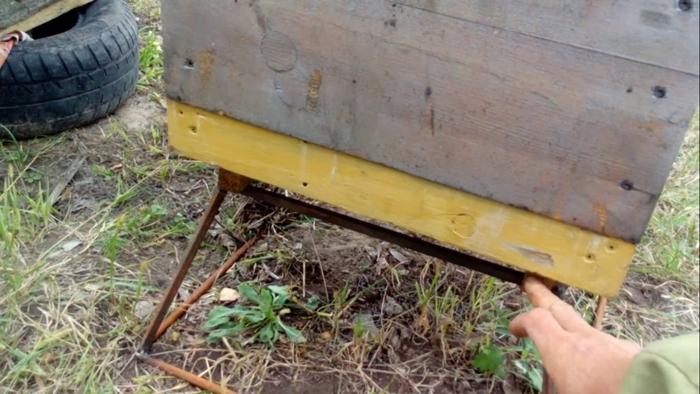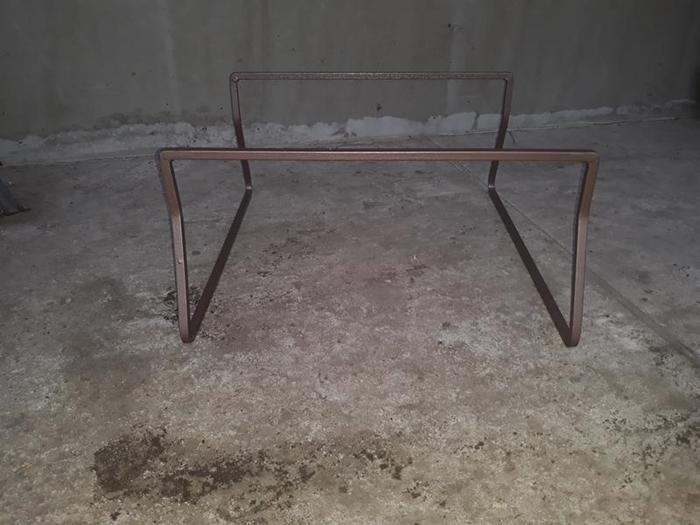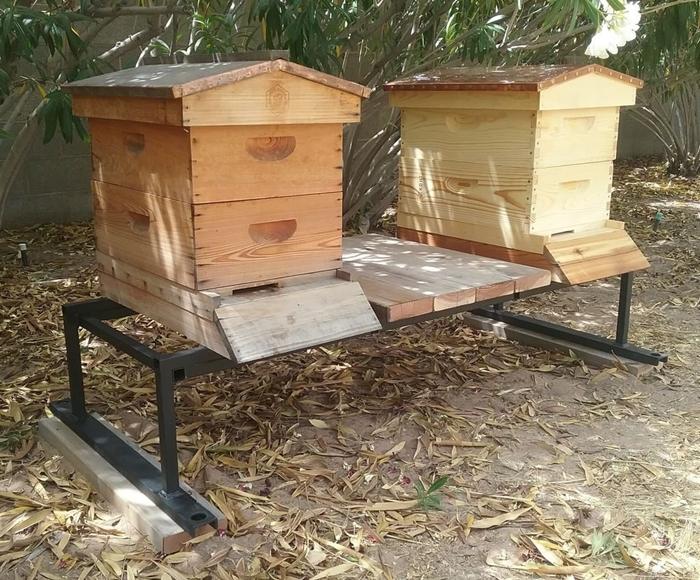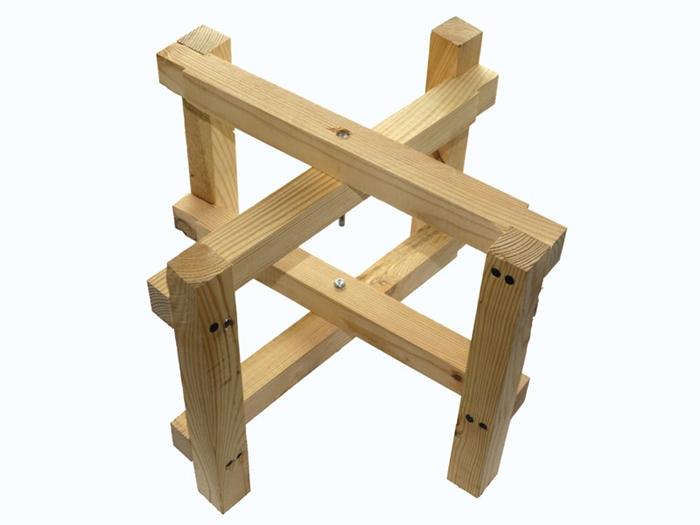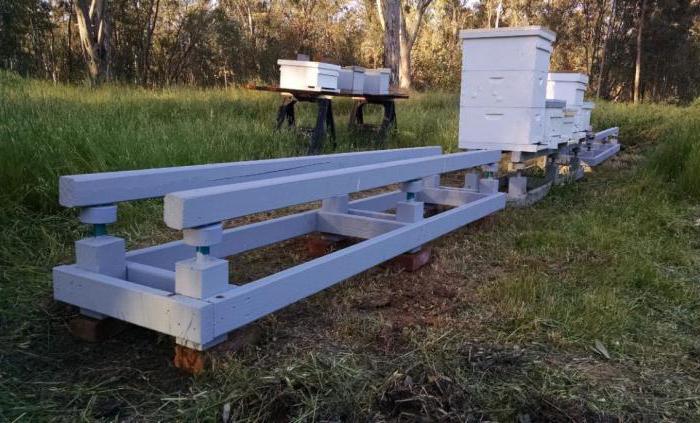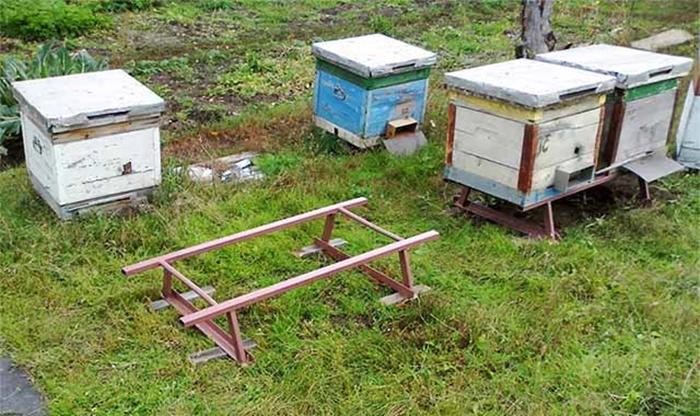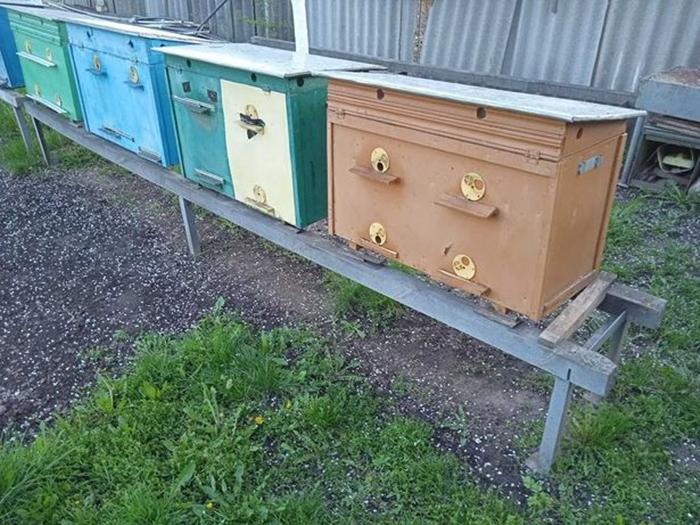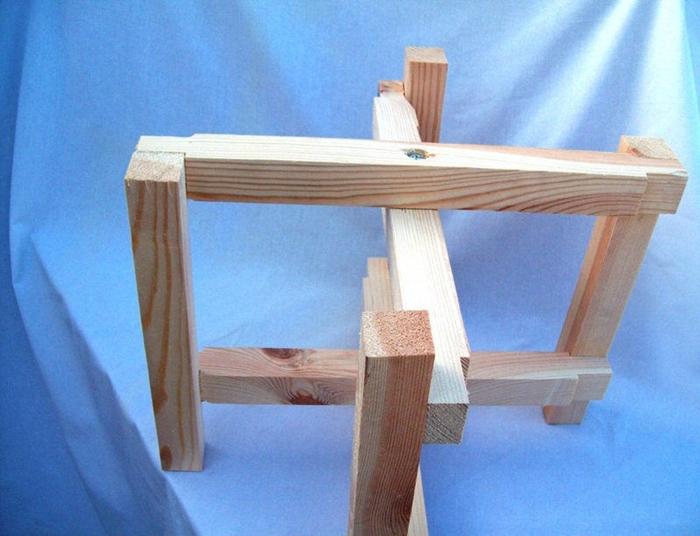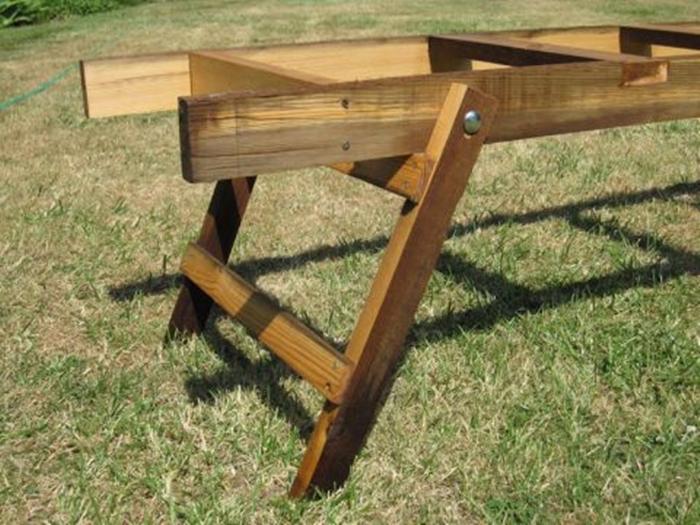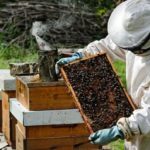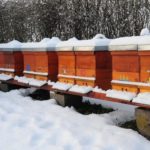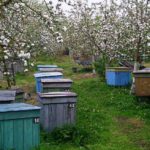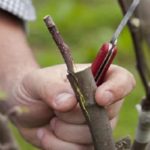The bee hives that most beekeepers use are made of wood. This material is short-lived and susceptible to rotting. To protect the bottom of the bee house from destruction, beekeepers use stands for hives. Let's look at the types of stands, their advantages and disadvantages. How to make them yourself, what materials and tools you will need.
What are hive stands needed for?
The wooden boards from which bee houses are made, when outdoors, sooner or later begin to rot, even if they have been treated with paint or impregnation. Those places that are close to the ground begin to rot especially quickly. To prevent this from happening, you need to raise the hives above the ground.
Precipitation, snow, and dirt will no longer fall on the bottom and lower part; they will remain dry. And the bees themselves will benefit from a higher location of their home - they also like to live in dry conditions, and in such conditions diseases spread less.
The stands prevent rotting, drying out and warping of the wood, and the paint layer coming off. There are fewer pests - ants, beetles, earwigs. The stands make the hives stable, they are protected from the wind and during heavy rains.
Stands should be light, simple in design, strong, and stable. It is desirable that they can be folded, then they can be transported along with the hives. Must be made from a material that is minimally exposed to adverse weather conditions. One of the main requirements is that the stands must withstand a weight of at least 100 kg, which includes the weight of the hive with bees and snow that may accumulate on the roof.
Varieties
As a stand, you can use various devices, mostly of simple shape.
Stakes
This is the traditional way to set up hives. These are bars with a thickness of 5-7 cm in the upper part and 4-5 cm in the lower part. At 4 corners, stakes are driven into the ground so that they do not sag or warp under the influence of the weight of the bee house. The height of the pegs is 20-40 cm. This method is convenient if the area of land where the hives will be located is uneven and you need to install them horizontally (with a forward slope of 1-2 cm to drain rainwater).To give rigidity to the structure, before installing the hive on it, you can connect the stakes in pairs with planks.
The disadvantage of this method is that the stakes are not portable and can be used for 1-2 seasons. Pegs can only be used where the soil is dense and not washed away by rain. Of the undoubted advantages - low cost, easy to make and install.
Boxes
They must be made of planks at least 3 cm thick. Fill the boxes with shavings, sawdust, leaves, and dry grass. Protect the insulation from precipitation. Wintering on such a stand is easier, there is less death, and the development of bees in the spring begins earlier. The dimensions of the boxes are calculated according to the dimensions of the hives.
The disadvantages of boxes as stands is that they are also made of wood, which will rot. They are non-separable, do not fold, and are difficult to transport.
Truncated pyramids
The structures are light, compact, stable. They are made of metal rods welded in the form of a truncated pyramid.
They support the weight of the hive well and do not interfere with ventilation. The size of the upper square is 50x50 mm, the bottom square is 60x60 mm, the height of the pyramids is 20 cm.
Other options
In addition to the above options, you can use the following:
- car tires, for stability the middle must be filled with sand;
- plastic beer or milk crates;
- bottles instead of stakes, filled with cement;
- rims of automobile and tractor wheels;
- bricks;
- cinder blocks;
- thick logs.
When installing hives on them, you should ensure that they stand level and stable. All of the options listed are not portable; taking them with you when transporting is problematic. This must be taken into account if you plan to transport bees from place to place frequently.
Advantages and disadvantages
The advantages of using stands are obvious:
- protection of wood from moisture and dirt;
- give stability;
- stakes and truncated pyramids can be folded for transport; they do not take up much space during storage.
Flaws:
- wooden boxes - fragility;
- for pyramids it is impossible to insulate them;
- for stakes - one-time use;
- Car tires may have an unpleasant odor in the heat, and wasps may form nests inside.
Required tools and materials
It’s easy to make coasters; you don’t need any special knowledge or rare materials. To knock together boxes you will need nails and a hammer, and to make pegs you will need bars and a saw. To construct pyramids - a metal rod and a welding machine or angles and bolts.
Making your own coasters
Since the designs are simple, it does not require much time to manufacture. It is enough to buy the material in the required quantity and spend several hours on the work.
Wooden
The easiest way is to make stakes. To do this, you just need to cut a thick beam into pieces 40 cm long. The pegs need to be treated with varnish or paint if you plan to install the hives in a permanent place. Then they can last 4-5 seasons.
Homemade boxes are also made from wooden blocks. The thickness of the material should be 3 cm so that the products can withstand the load in all weather conditions. The size of the boxes should be no less than the size of the hives, maybe larger, but not significantly. The bars cut into pieces are connected using nails in the shape of a square or rectangle.
Metal
Metal stands are welded from rods or connected with corners. The dimensions of the stands should also match the dimensions of the bottom of the hives to ensure stability. The simplest design is a square with legs welded at the corners. The height of the stands should be at least 30-35 cm from the ground when installed.
Metal stands from corners can be made with folding legs. The legs are not welded, but connected with special bolts. This option is convenient if you plan to frequently transport bees along with stands.
Amateur beekeepers need stands for beehives. Stands perform useful functions. They raise bees' homes off the ground, improving ventilation and microclimate, and reducing the likelihood of harmful insects getting inside. They preserve the health of the family, ensure the stability of the hives in bad weather, protect the wood from damage, and extend their service life.
The stands of some models can be transported along with the hives, so first of all you need to choose those. You can buy industrially made ones or assemble them yourself. Both of them, if properly manufactured and installed, help the beekeeper obtain good quality honey products.


